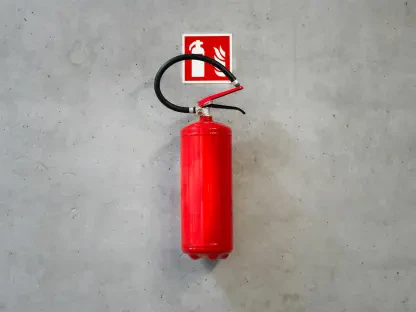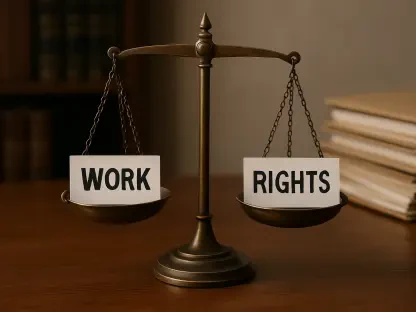Effective handling of employee complaints is essential for maintaining a safe and productive workplace. Ensuring that investigations are conducted promptly, thoroughly, and fairly can help resolve issues before they escalate into costly disputes or crises. However, employers often face the dilemma of whether to use internal or external investigators for these complaints.
1. Understand the Complaint
To begin, employers need to carefully assess the complaint and engage directly with the complainant if identifiable. This initial step is crucial, as understanding the accusations will provide the necessary foundation for a thorough investigation. The HR team should listen attentively, ask clarifying questions, and gather as much relevant information as possible from the complainant. This step ensures that the allegations are clearly defined and sets the stage for subsequent investigative actions.
In states like California, employers are legally required to investigate complaints of harassment, discrimination, and retaliatory behavior promptly. An understanding of the legal requirements and the nuances involved in these types of claims will guide employers toward an appropriate course of action. Gaining a comprehensive understanding of the nature of the complaint helps employers decide whether an internal investigator or an external expert should be tasked with the investigation to ensure legal compliance and timely resolution.
2. Define Investigation Scope
Once the complaint has been assessed, defining the scope of the investigation is the next step. This involves outlining the boundaries of the investigation and determining the breadth of inquiry necessary to address the allegations. Beginning the investigation by interviewing witnesses individually is a recommended approach.
The decision to hire an external investigator or rely on an internal team can be influenced by several factors. These include the seriousness and complexity of the allegations, the potential for litigation, the likelihood of media scrutiny, the current workload on internal personnel, the complainant’s trust or distrust of the company, and the specific nature of the allegations. These considerations help ensure that the investigation is conducted in a manner that is thorough and unbiased, maintaining the integrity of the process.
3. Initiate Witness Interviews
The process of interviewing witnesses begins with introductions and expressing appreciation for their participation. The investigator should describe the investigation process and clarify their role, emphasizing their responsibility to ask questions, review relevant documents, and summarize factual findings in a report. It is crucial to stress the importance of providing truthful information from the onset.
The investigator must inform the witness about the illegality of retaliation, creating a safe environment where the witness can share information without fear of repercussions. Additionally, requesting the witness not to record the meeting (if conducted virtually) helps maintain the confidentiality and integrity of the investigation. Before starting, the investigator should ask the witness if they have any questions or concerns, assuring them that they can arrange another meeting if required. Setting the right tone at the beginning of the interview can significantly impact the quality of information gathered.
4. Conduct Witness Interviews
The actual substance of the witness interviews should focus on gathering relevant information that can aid the investigation. An investigator should delve into the witness’ background and their knowledge related to the complaint, using open-ended inquiries to elicit detailed responses. Open-ended questions encourage witnesses to provide comprehensive information and prevent them from feeling cornered or attacked.
Throughout the interviews, the investigator should maintain a fact-finding approach and avoid any interrogative posture. This method helps in creating a cooperative atmosphere where witnesses feel comfortable sharing information willingly. The investigator’s role is to gather facts to establish a clear picture of the events surrounding the complaint, thus ensuring an objective and unbiased investigation. Collecting accurate and relevant information during these interviews is pivotal to the success of the investigation.
5. Review Witness Information
Post-interview, the investigator should review any documents provided by each witness, analyzing the content to determine if additional interviews are necessary. This step allows the investigator to piece together the information obtained and assess if there are gaps that need to be addressed through further inquiry.
Evaluating the information provided in witness interviews helps in understanding the broader context of the complaint. By systematically reviewing the documents and statements, the investigator can identify patterns, corroborate testimonies, and detect inconsistencies. This thorough analysis lays the groundwork for drafting a comprehensive final report. The investigator must consider all aspects and ensure that the investigation is exhaustive, which can sometimes mean expanding the scope to include more witnesses or documents.
6. Draft Final Report
Writing a final report is a critical part of concluding the investigation. The report should start with an executive summary identifying the investigator, summarizing the claims, and indicating whether each claim is supported. This summary provides a concise overview of the investigation’s findings.
The scope of the investigation section should list all witnesses, their positions, interview dates, and key documents reviewed, attaching them as exhibits. This thorough documentation offers transparency into the methodology and ensures that the report is rooted in verifiable evidence. Observations and highlights within the report should offer a clear narrative of events based on witness testimony and relevant documents. The investigator must clarify ambiguities, such as he-said-she-said situations, and may need to make credibility determinations where necessary. Concluding the report involves briefly stating whether each claim is substantiated or not, providing a clear outcome of the investigation.
7. Implement Corrective Actions
Effectively handling employee complaints is crucial for fostering a safe and productive work environment. Investigations that are conducted promptly, thoroughly, and fairly can resolve issues before they turn into costly disputes or crises. However, employers often grapple with deciding whether to use internal or external investigators for handling these complaints. Internal investigators may offer the benefit of familiarity with the organization’s policies and culture, potentially speeding up the investigation process. On the other hand, external investigators can provide an unbiased perspective, which may enhance credibility and trust among employees. Deciding which type of investigator to use requires careful consideration of the nature of the complaint, the resources available, and the desired outcomes. Both internal and external approaches have their merits and potential drawbacks, but the primary goal should always be to address grievances effectively, ensuring fairness and transparency while maintaining a healthy workplace atmosphere.









